Alfama Walking Tours A Brighton Dad’s Love for Lisbon
Last updated on August 6, 2025 at 01:38:20
Picture this: it’s 7 AM on a Tuesday in May 2017, and I’m stumbling through Alfama’s cobblestone maze, nursing the mother of all hangovers and wondering what possessed me to book this spontaneous trip to Portugal. Then I turn a corner, and bloody hell the morning sun hits these ancient tiled walls, a yellow tram clangs past below, and I swear I can smell fresh custard tarts warming in some hidden bakery. It felt like the kind of morning Alfama walking tours are made for.
Right there, hungover and disoriented in a narrow alley I couldn’t pronounce, Lisbon grabbed me by the throat.
Seven years on, I’m typing this from our little terrace in Alfama while Lena practices her Portuguese homework and Theo argues with our neighbor’s cat in broken Portuguese. What started as a desperate escape from Brighton’s drizzle became the best decision I never knew I was making.
What You Actually Need to Know
- Forget everything you’ve read about Tram 28 – the queues are mental and there are better ways
- Alfama first, everything else second – this is where Lisbon’s heart beats strongest
- Embrace the hills – your Fitbit will thank you, and so will your appetite
- Sunrise beats sunset – fewer crowds, better light, magical moments
- Book early from the UK – everyone’s cottoned on to how brilliant this place is
Your Easy Guide to Getting to Alfama Walking Tours
Flying from the UK to Lisbon is stupidly easy these days. Two and a half hours from most major airports, and you’re stepping into 25-degree sunshine while your mates back home are dealing with another grey Manchester morning. I’ve done this journey so many times now that the cabin crew probably think I’m smuggling something.
That metro ride from the airport costs pocket change – about £1.70 – and dumps you right in the city center. But here’s the thing: after traveling with two small humans and enough luggage to supply a small army, sometimes that taxi fare is the best money you’ll spend all week. Dragging luggage up Alfama’s steep streets as Theo melted down spectacularly taught me the lesson the hard way.
Word of warning: not all Lisbon neighborhoods are created equal when it comes to transport links. I once booked what looked like a central spot near Entrecampos station. Central my arse – it was like staying in Croydon and calling it London.
Why Alfama Walking Tours Captured My Heart
Everyone bangs on about Belém this and Jerónimos that, and fair enough – they’re proper impressive. But if you want to understand why I fell so completely for this city, why we ended up buying a place here, why the kids now consider themselves half-Portuguese, you start in Alfama.
This neighborhood survived the earthquake that flattened most of Lisbon in 1755. Walking these twisted streets feels like time travel – not the sanitized Disney version, but the real deal. Washing still hangs from windows, old blokes play cards on plastic chairs, and the whole place smells of grilled fish and strong coffee.
Lena’s developed this game she calls “door detective” – spotting the tiny entrances that lead to hidden courtyards and secret gardens. Theo’s appointed himself official cat greeter for the entire neighborhood. Both speak better Portuguese to the local strays than I do to humans, which is mildly embarrassing but also brilliant.
Here’s what the guidebooks won’t tell you: hit Miradouro das Portas do Sol just after dawn. You’ll have those jaw-dropping views over the river completely to yourself. By the time the tour groups rock up, you’ll be deep in the maze, discovering corners that most visitors never find.
Alive and Unforgiving A Wild Adventure
Let’s address this head-on: Lisbon makes Brighton look pancake-flat. These aren’t gentle slopes – they’re proper San Francisco-grade inclines that’ll have you questioning your life choices by lunchtime. But here’s the mad bit: I dropped three pounds in four days while eating custard tarts for breakfast and drinking beer with lunch.
The secret weapon? Walking everywhere. And I mean everywhere. The kids treat it like some epic adventure – Theo pretends he’s scaling mountains, Lena keeps a step counter and announces our daily totals like she’s running the London Marathon. Yes, your calves will ache. Yes, you’ll curse me halfway up some impossibly steep cobblestone street. But that’s when you stumble onto the tiny family place serving the best grilled sardines you’ve ever tasted.
The metro’s actually brilliant when you need it – clean, efficient, properly air-conditioned. But if you’re always underground, you’ll miss the real show happening at street level.
The Great Tram 28 Con
Right, can we have an honest chat about Tram 28? Every bloody guide, blog, and Instagram post treats it like some essential Lisbon experience. Here’s the reality: I watched a family from Leeds wait two solid hours in the May heat just to squeeze into what can only be described as a moving sardine tin full of tourists, all holding phones above their heads trying to get that perfect shot while completely missing the actual neighborhoods rolling past.
Meanwhile, Trams 12, 15, and 25 run similar routes with a fraction of the madness. My lot’s favorite is actually the creaky old wooden ones that still rattle through certain parts of town. Theo calls them “pirate ships with wheels,” which isn’t entirely wrong. They’ve got character, they’re practical, and you might actually get a seat.
Want the real Alfama experience? Walk it. Those narrow alleys weren’t designed for trams anyway – they were made for foot traffic, for conversations with neighbors, for discovering the hidden bits that make this neighborhood special.
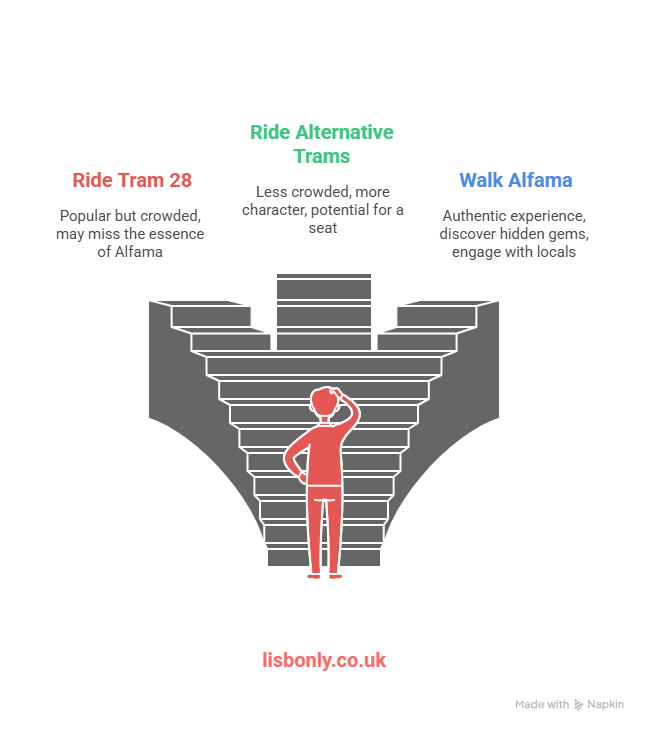
Neighborhoods That Actually Matter
Alfama: The Beating Heart
I could write volumes about Alfama, but let me get specific. This isn’t just about pretty tiles and tourist-friendly fado shows. This is about finding your rhythm in a place where time moves differently. Where Senhora Isabel at the corner shop remembers exactly how you take your coffee. Where kids still play football in tiny squares while their grandparents watch from doorways.
Our ritual with visiting friends always starts the same way: early evening at Miradouro de Santa Luzia when the light turns properly golden. Then we wind down through streets so narrow you can touch both walls, past the cathedral (completely free, unlike half the attractions in this city), ending up at whichever tasca smells best and serves whatever they cooked that day.
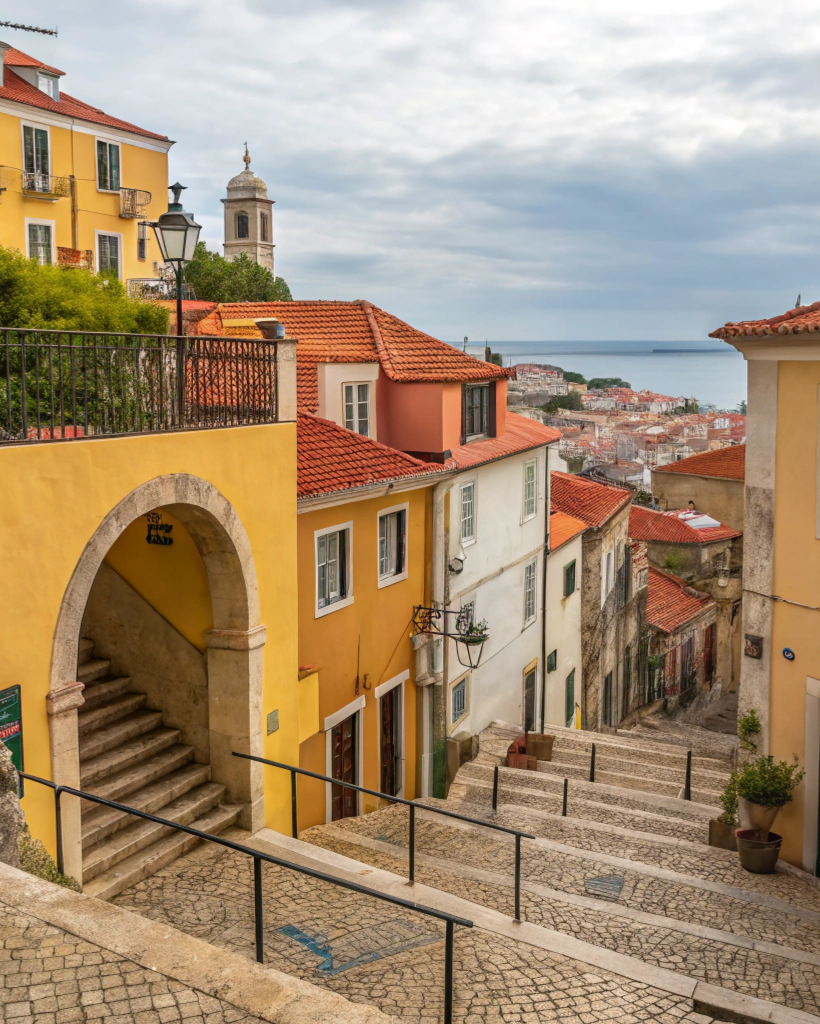
Baixa: Phoenix from the Ashes
The Baixa district tells an incredible comeback story. After the 1755 earthquake turned it into rubble, they rebuilt the whole thing using this revolutionary grid system – proper forward-thinking for the time. Walking down Rua Augusta now, with those perfectly planned buildings and that stunning archway framing everything, you’d never guess this was once a disaster zone.
Praça do Comércio is where we always bring first-timers for the proper “bloody hell” moment. It’s one of Europe’s biggest squares, sitting right on the waterfront, and the scale genuinely takes your breath away. The kids love the wide-open space – rare in this city of narrow alleys – and there’s something magical about watching the Tagus flow past while you nurse a coffee under those grand arcades.
See that statue in the middle? José I on his horse Gentil – bit of local knowledge for the pub quiz back home. And Martinho da Arcada, tucked in the corner arcade, really is Lisbon’s oldest café. Their tiramisu is legendary, though I suspect it’s not entirely traditional Portuguese fare.
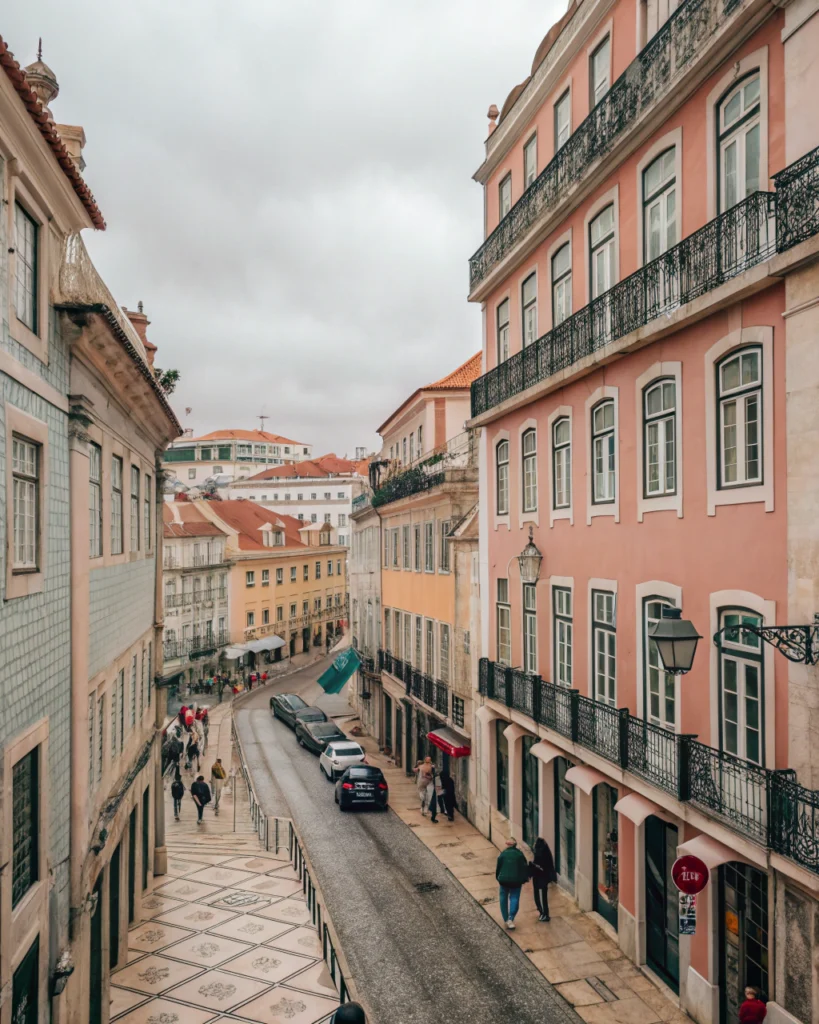
Views That Spoil You for Everywhere Else
One thing that never gets old about Lisbon is how the city embraces its viewpoints. These miradouros aren’t just tourist photo stops – they’re proper community spaces where locals come to decompress, catch up with neighbors, and watch the world unfold below.
My personal favorite is Miradouro São Pedro de Alcântara. Easy to reach thanks to the Elevador da Glória funicular, lovely park setting, and views that make you understand why people write poetry about this city. Lena’s gotten brilliant at identifying different neighborhoods from up there – better than most adults, actually.
Here’s the best bit: nearly all these viewpoints are completely free. While tourists queue and pay a tenner to climb Castelo de São Jorge, you can get equally stunning panoramas from half a dozen miradouros without spending a penny. The only price is slightly achy legs from the climb, but that’s part of the charm.
When Buildings Tell Stories on Alfama Walking Tours
Once you start noticing Lisbon’s azulejo tiles, you can’t stop. They’re everywhere, each building wearing its history in ceramic and glaze. It becomes addictive – spotting the intricate patterns, watching how morning light transforms them, seeing how each facade expresses something unique about the families who’ve called it home.
The kids have turned tile-hunting into serious competition. Theo specializes in finding animal motifs (surprisingly common), while Lena documents geometric patterns with the dedication of a proper researcher. My phone’s now stuffed with hundreds of photos, each one capturing a tiny piece of Lisbon’s soul.
If you’re genuinely interested in the history and craftsmanship, the National Tile Museum is worth the fiver. But honestly? Some of the most stunning examples are just there on random street corners, telling stories of centuries past without charging admission.
Food That Ruined Everything Else
This is where Lisbon properly got its hooks into me. Not just the famous stuff – though we’ll definitely talk pastéis de nata – but the whole food culture. Tiny family places that have served the same three dishes for decades sitting next to innovative restaurants that are redefining Portuguese cuisine.
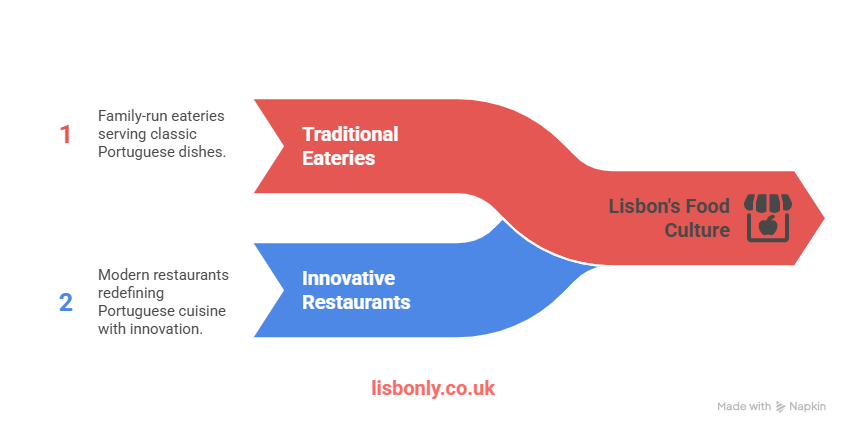
The Sandwich Education
I thought I understood sandwiches until I discovered the bifana. Imagine tender pork that’s been marinating in bay leaves, garlic, and white wine, stuffed into crusty bread that’s absorbed all those incredible juices. At As Bifanas do Afonso, the queue tells the whole story – locals don’t queue for tourist nonsense.
The ritual is half the experience: order your bifana, grab a cold Sagres, find a spot against the wall with everyone else, and douse the whole thing in mustard and that magical piri-piri oil they keep on the counter. Theo reckons it’s the greatest invention in human history, and I’m not about to argue.
Then there’s the prego – Portugal’s answer to the steak sandwich that makes British pub fare look tragically inadequate. O Prego does the definitive version, but book ahead or show up early. It’s tiny, intimate, and absolutely worth planning around.
Monks and Their Brilliant Leftovers
Those pastéis de nata everyone obsesses over? created by monks at Jerónimos Monastery who needed a way to use all the extra yolks after starching their garments using egg whites. Thank God for practical clergy, eh?
You’ll find them everywhere now, and honestly, most are pretty decent. The kids have developed a proper rating system based on pastry crispness and “custard wobble factor” – surprisingly scientific criteria. Our local favorite is this tiny place near the flat where Manuel, the owner, always slips Theo an extra one “for growing bones.”
Finding Quiet Spots After Alfama Walking Tours
One brilliant thing about Lisbon is how easy it is to escape when the city energy gets overwhelming. The transport links connect you to some genuinely gorgeous places within an hour or two of the center.
Cascais has become our regular weekend retreat. The kids love the beaches, I love how it maintains that fishing village character despite all the development. It’s like Brighton but with reliable sunshine and Portuguese soul.
My favorite discovery, though, was Évora – about 90 minutes by train. The Roman temple there genuinely transported me – could have been Greece if you squinted. The Chapel of Bones is properly haunting, though maybe save that for when your kids are older. Theo still asks unsettling questions about “the skeleton church.”
The Practical Bits (Someone Has to Be Sensible)
The Lisbon City Card actually justifies itself if you’re hitting the major attractions. Free transport, skip-the-queue access, restaurant discounts. For a family of four, it paid for itself by day two of our first proper tourist visit.
Summer accommodation disappears months in advance, especially anything family-friendly in the decent neighborhoods. I learned this the hard way during our first family trip when we ended up in what estate agents would charitably call a “characterful” place near the airport. Character is overrated when you’re dealing with jet-lagged children.
UK school holiday periods mean booking everything early and accepting that prices creep up when demand peaks. The pound still goes reasonably far here, but don’t expect the bargains of five years ago.
How a City Gets Under Your Skin
Nobody warns you about how Lisbon changes you. Maybe it’s how morning light hits those tiled facades just so. Maybe it’s discovering a city this beautiful that still feels genuinely lived-in rather than preserved in museum amber. Maybe it’s how locals actually seem to enjoy being here, not just endure it.
For us, what started as holiday escapism evolved into something deeper. The kids chat Portuguese with our neighbors, we have “our” café where they know our order before we sit down, we’ve watched seasons change from our little balcony overlooking the Tagus. This stopped being travel and became life.
Whether you’re planning a long weekend or considering something more dramatic, Lisbon has this way of making you feel like you belong. Not as a tourist passing through, but as someone building genuine connections and creating real memories.
Your Turn to Try Alfama Walking Tours
So there it is – Lisbon through the eyes of someone who never intended to call it home but somehow did exactly that. It’s complicated and beautiful and occasionally maddening and absolutely perfect, sometimes all within the same afternoon.
My advice? Come with comfortable shoes and an open mind. Wander without agenda, chat with locals, eat whatever looks good, and don’t stress about ticking boxes on some tourist checklist. The best bits of Lisbon happen in the unplanned moments between scheduled activities.
When you find yourself perched at some tiny miradouro at sunset, watching the city glow amber below while trams clatter in the distance and the smell of grilled sardines drifts up from the streets, you’ll get it. You’ll understand exactly why this place hijacked my life plan.
Fancy following along as we continue exploring Lisbon’s hidden corners and family-friendly discoveries? Alfama walking tours are just the beginning. There’s always more to uncover in this endlessly surprising city, and honestly, we’re just getting started with the stories.
FAQ Alfama Walking Tours
Do I need a guide for Alfama?
Not really. Getting lost is half the fun. A guide’s great for hidden history, but wandering on your own? Magic.
Is Alfama walkable with kids?
Yep – if you take it slow. It’s hilly and cobbled, but my kids turned it into an adventure. Just wear real shoes.
Where to walk in Alfama?
Start at Miradouro de Santa Luzia, then just follow your feet. Wind through the alleys, pass the Sé Cathedral, pop into hidden courtyards, and chase the smell of grilled sardines. Alfama’s not about following a map it’s about getting wonderfully lost.

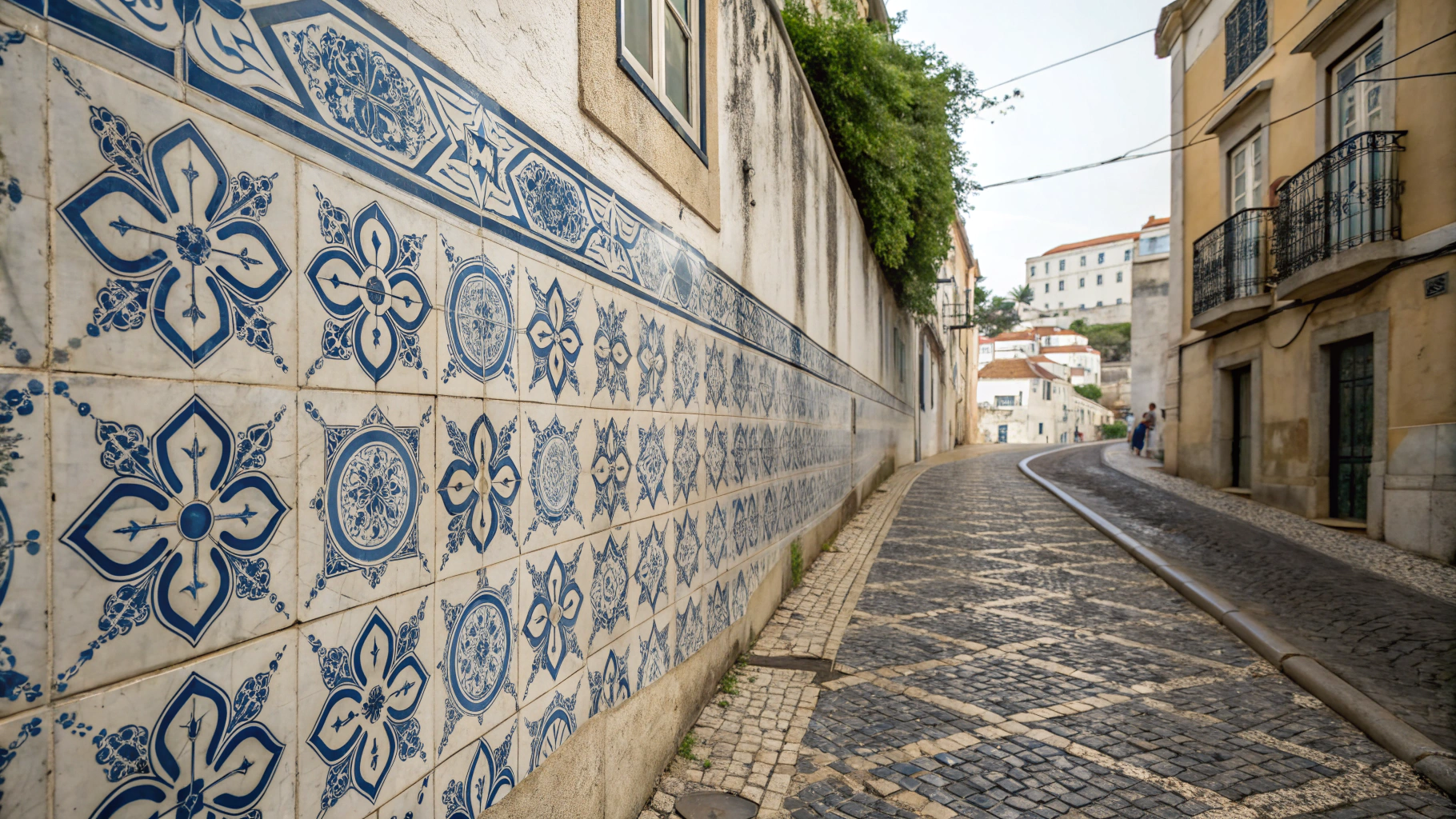
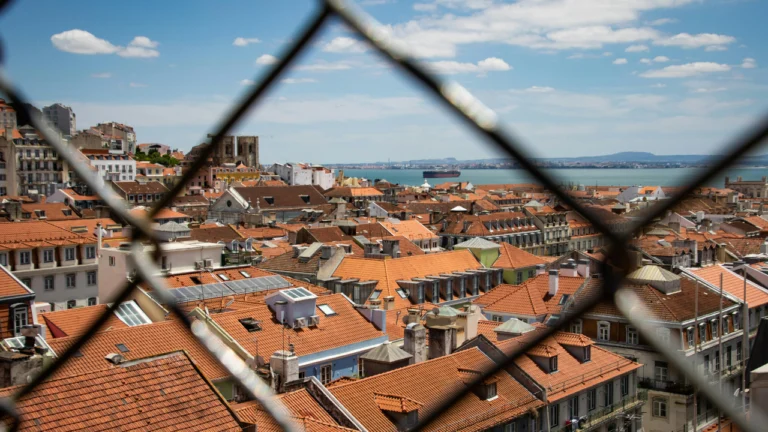
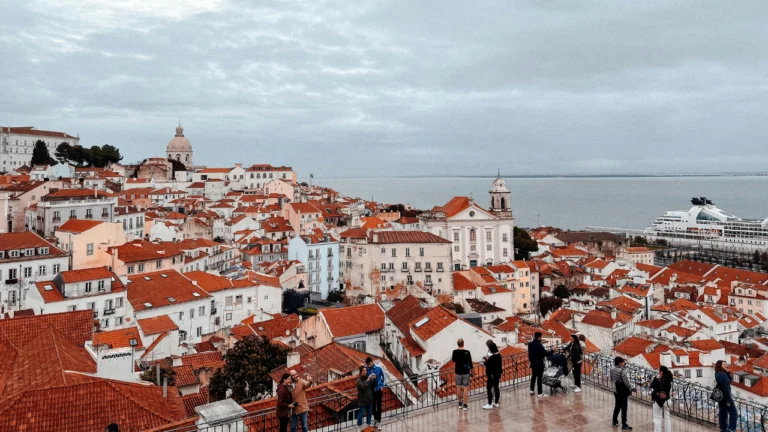
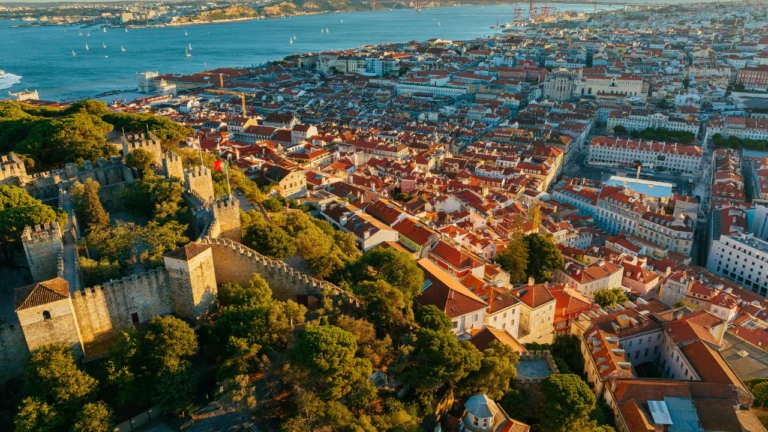
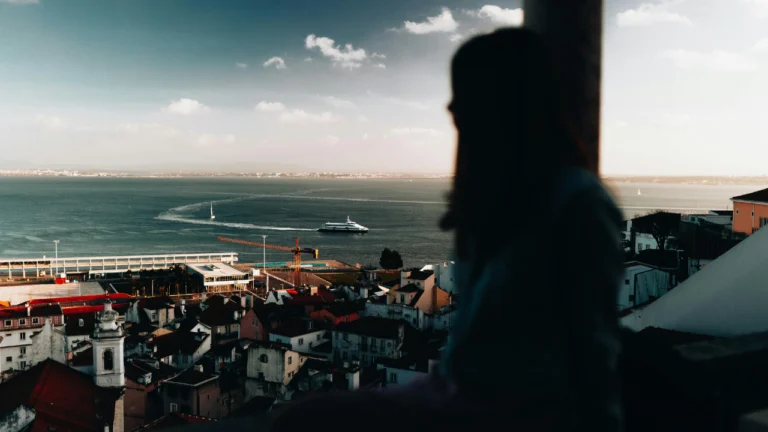
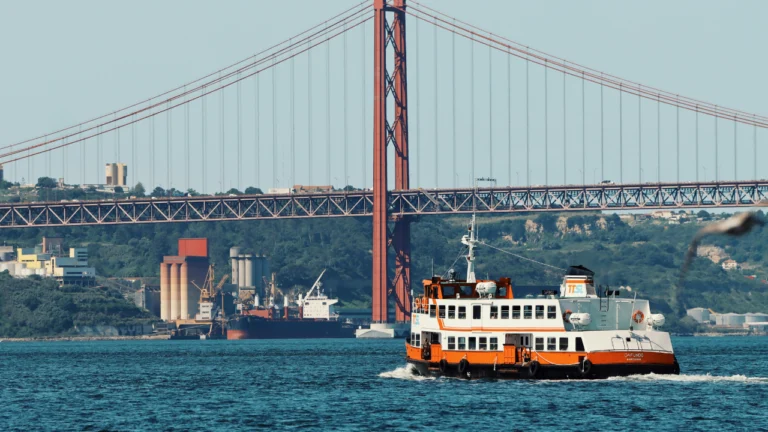
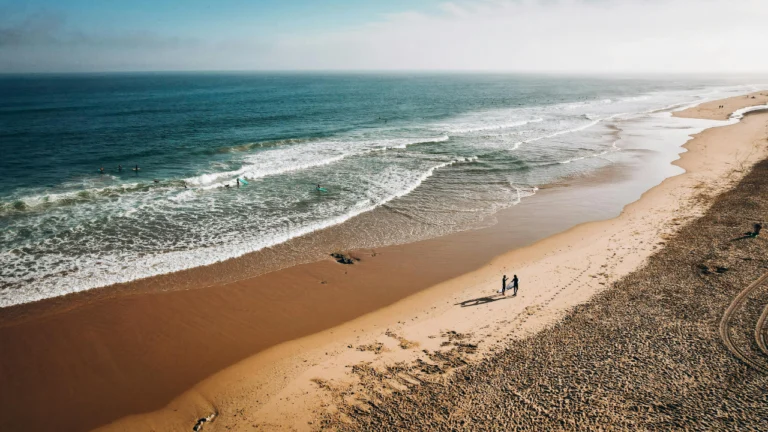
One Comment